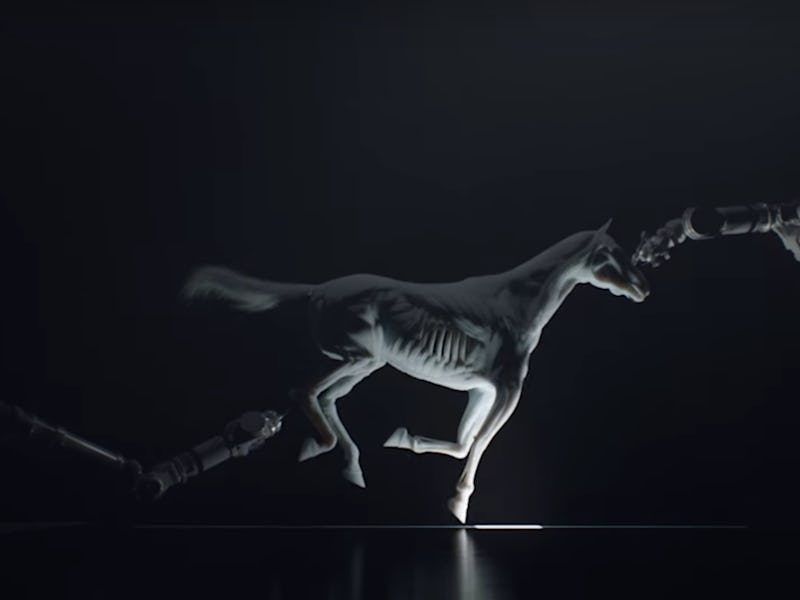The tiny quadruped shuffles along, its little feet dragging until it’s told to go faster. Soon, it’s running like a tiny, awkward mechanical horse.
The little galloping robot is named Oscillex 3 and able to change its gait on-command, a big achievement for tiny robots that usually require pre-set movement patterns. Dai Owaki and Akio Ishiguro, roboticists from the Tohoku University in Japan, published their results in Scientific Reports on Tuesday.
Gait-shifting has been a major problem for quadrupedal robots, with places like Boston Dynamics depending on single movement patterns at a time. The tiny galloping-robot opens the door for how movement efficiency is understood and more complicated quadrupedal robots, like the robot horses in Westworld.
Shifting gaits is difficult for quadruped robots because researchers still don’t totally understand how animal quadrupeds coordinate themselves. This makes it hard to figure out if it makes sense to have a central AI that is ordering the legs through some sort of pre-set program, or if there is a better way. The program in the robot has one leg sense that it’s carrying weight, and then shift weight to a nearby leg. By using a central control to tell the robot to increase its speed, the researchers were able to create naturalistic gait movement.
It might not look like a horse, but Oscillex 3 knows how to move like one.
Horses have a bunch of different gaits because different coordinations of limbs makes it more energy efficient to move at different speeds. Walking has each foot moving independently and the faster trot has the legs moving together in diagonal pairs. To increase speed, it’s useful to think of the gaits as changes in how the diagonal pairs hit the ground. For the canter, one of the diagonal pairs extends so the legs land at different times and create a three-beat movement. The gallop then extends the remaining leg pair to land at different times, which builds a very fast four beat gait.
When moving through the gaits, the robot actually demonstrates all four gaits. It starts at a walk, with the feet landing one at a time, and then moves up into a very clear diagonal trot gait. When the researchers increased the speed suggestion for the robot, it moves from the trot into a fast the three-beat canter movement (at 1:10-1:12) before continuing to increase into a four beat gallop. The inclusion of the canter movement was noted with surprise in the paper. A real horse would canter a little bit to go from a trot to a gallop, so the gallop-bot looks to be on the right track for imitating horse movement.
The quadrupedal robots from Boston Dynamics tend to either walk or trot, which researchers have seen as the most energy efficient gaits. However, the researchers found the gallop to be as efficient for the little robot as it is in horses. The brief canter interval wasn’t quite as efficient, but the researchers suggest that this is because a real horse wouldn’t canter at such a slow speed. With this, having robot horses that move like real horses doesn’t seem that far away, especially as we look into robots that need to be efficient at higher speeds. So maybe Boston Dynamics’ next robot will be a mail-carrying galloping horsebot, harkening back to the days of the Pony Express and making our world just a little more like Westworld.
